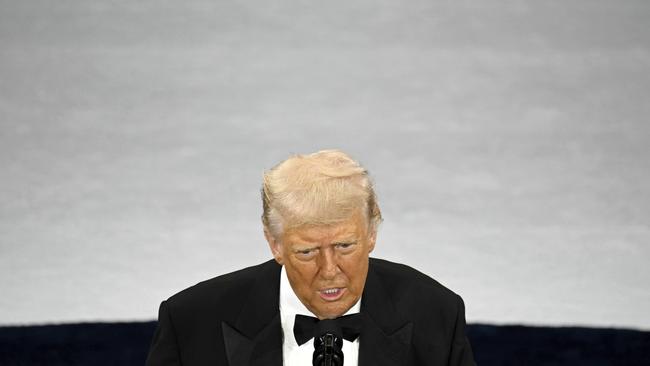US, China trade war sparks fears for ag exports
Following a week of market turmoil and global financial panic President Trump has announced a 90-day pause on tariffs for most nations.
US President Donald Trump has announced a 90-day pause on his controversial tariffs for most nations following a week of market turmoil and global financial panic.
However, in a clear indication of the trade war between the world’s two largest economies, he has simultaneously increased tariffs on Chinese imports to 145 per cent.
Mr Trump first imposed variable tariffs on US imports on April 3, triggering panic selling across global markets.
Late last week those tariffs were rolled back to a flat 10 per cent for most countries — bringing them in line with existing US duties on Australian goods.
In announcing the pause, Mr Trump said “people were jumping a bit out of line. They were getting yippy” in reaction to the tariffs.
The US-China trade conflict, however, shows no signs of cooling. The 145 per cent tariff on Chinese imports – they were initially announced as 125 per cent tariffs but later clarified as 145 per cent to incorporate a further 20 per cent tariff already levied under an emergency measure to tackle fentanyl trafficking – takes effect immediately, while China has hit back with a 125 per cent tariff on US goods.
For countries like Australia, already subject to a 10 per cent base rate, the situation remains unchanged.
Academics have warned a tit-for-tat trade war between the US and China is threatening to push the Asian superpower into a recession and dampen its demand for imported Australian farmed goods.

Dr Robert Brooks, from Monash University’s business school, said China and the US appeared to be descending into a trade war, which could slow global growth and create economic uncertainty.
“It’s fairly clear now we have elements of that tit-for-tat between the US and China. We’re sitting here having to think through how each country will position itself. That uncertainty is never good for business confidence and consumer sentiment,” he said.
“For an extended period of time, China’s growth strategy has been focused on exports, and this would take a hit, Dr Brooks said.
“Can China moderate some of the effects on its growth from the deteriorating trade situation with the US by stimulating domestic consumption?
“The risk for Australia was always the indirect effect of the Trump tariffs, and a setting where global growth became lower and with a particular emphasis on growth in China and Asia.
“There were already those indirect risks, even before the subsequent rounds of escalation,” he said.
Dr Brooks said the threat for Australian exports with a weakened China was its purchasing power.
“For some Australian agricultural products, alternative market access is something that needs to be vigorously pursued,” he said.
Last year, China exported US$438.9b of goods into the US, according to the United States Trade Representative, with the lion’s share being electrical or electronic equipment.
In an about-face on Friday, President Trump granted smart phones, computers and some electrical items imported from China an exception from “reciprocal tariffs” of 145 per cent, but the rate remains in place for all other Chinese imports.
Economist Isaac Gross, from Monash University’s Department of Economics, said few exporters could wear a tariff in excess of 100 per cent.
“It will be a considerable blow for the Chinese economy, which would lead to a fall in demand for our goods, including iron ore and particularly for luxury goods,” Dr Gross said.
“Australian wine has been looking to expand, that’s going to be hit hard by any potential Chinese recession and the same is probably true for all the most basic foods; Australian premium beef, grains, that’s going to be harder and harder to sell if China falls into a recession.”
Australia’s biggest export to China is iron ore, with $104b exported last year, followed by natural gas and coal. But agricultural exports continue to rise, with $2.3b worth of wool sent last year, $2.2b of beef, $1.8b of barley and $1b of cotton.

Australian Wool Innovation chair Jock Laurie said it was difficult to assess the impact of the White House’s tariffs on Australian wool exports to China, but he had confidence the Chinese could ride out the economic upheaval.
“But at the moment with any new tariffs you would expect there to be a consequence, we’re not exactly sure yet what that will be,” he said.
“There’s a lack of economic confidence around the world, you’ll see subdued economic activity until things settle down and we understand what this all means. Then people will start trading again. But at the moment people are nervous and you see that impact in the markets,” Mr Laurie said.




